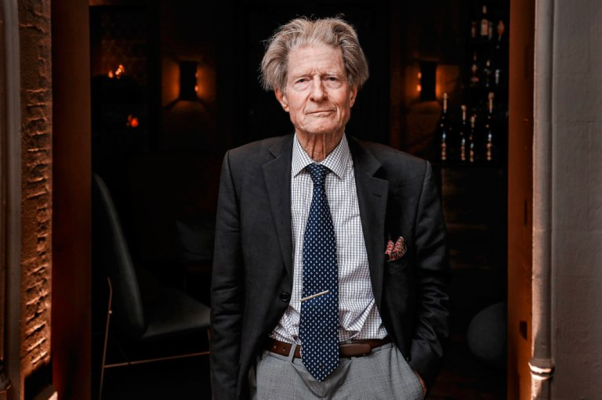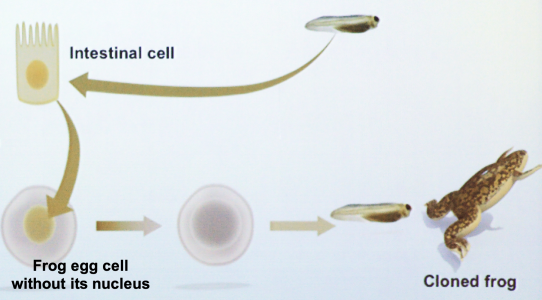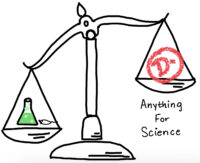
By Shivani Manikandan
“I believe he has ideas about becoming a scientist; on his present showing, this is quite ridiculous […] and it would be sheer waste of time, both on his part, and of those who have to teach him. (1)”
Imagine you are 15 years old, opening your report card with your parents, and your teacher has written that. Imagine being told you are so bad at your science courses that you are no longer allowed to study them, and instead you are to study ancient and modern languages. Unfortunately for Sir John Gurdon, he did not have to imagine these things, because he experienced them firsthand. Fortunately, he went on to have a very successful career in science, one that led him to win the Nobel Prize in medicine and to be knighted by the queen of England (2).
Growing up, Gurdon was always interested in the development of moths and butterflies and initially wanted to pursue zoology (1). Sadly, because of his academic struggles, he continuously faced obstacles on his career path. For example, because he was forced to study languages prior to applying to college, he was unable to get into the zoology program he wanted to study (2). Without being disheartened, Gurdon took a year to study the course work he missed out on and reapplied and was accepted to the zoology program at Oxford University! However, after his undergraduate years, upon applying to doctoral programs in entomology, he was rejected despite having discovered a new species of flies. Still devoted to science, he decided to pursue developmental biology with Dr. Michael Fischberg (2).
While his career path was anything but streamlined, science would not be the same today without his contributions to developmental biology. During his time, biologists were unsure if all the cells in the human body have the same genetic composition. Specifically, some researchers of his time found that once cells became a part of a specific organ (through a process called cell differentiation), they no longer contained the genetic material to become any other type of cell (3). However, Robert Briggs and Thomas King challenged this idea by demonstrating that when the nucleus of a cell in an intermediate stage of development is transplanted into a frog egg cell lacking a nucleus, a healthy frog can be grown (6). Curiously, their success rate decreased as the developmental stage of the transplanted nucleus progressed. This ultimately sparked Gurdon’s work, in which he transplanted the nucleus of a well-differentiated intestinal cell into a frog egg cell lacking a nucleus. After numerous failures, he was able to show that a healthy frog can be grown, which helped prove that cells do not lose genetic material as they differentiate and that they all contain the same genetic material. This was his Nobel Prize winning discovery (3).

The work of Gurdon and his joint Nobel Prize winner Dr. Shinya Yamanaka has made a dramatic impact on stem cell research. Gurdon’s work laid the foundation for the Yamanka’s discoveries on how pluripotent stem cells can be induced from differentiated cells. Pluripotent cells can differentiate into most of the cells in our body. This discovery has huge implications for stem cell therapies because it allows for a patient’s own cells to be used in their transplants or other treatments, which decreases risk of immune rejection (10). Additionally, induced pluripotent stem cells are used in creating disease models that capture the patient-specific causes of a disease and aid in creating a more realistic model for study (7). The implications of Gurdon’s discovery are still being explored, and he still continues to work in this field today. Now, he hopes to understand the mechanisms involved in inducing pluripotent stem cells (5).
At the University of Iowa, there are many researchers working on projects that Gurdon’s work laid the foundation for. You can find work that is related to Gurdon’s discoveries in the links below. Specifically, you can find experts studying the development of facial structures and experts that are working on using stem cells to develop gene therapies for cystic fibrosis (8, 9).
Working off the understanding that all cells have the same genetic material, researchers in the study of facial structure development are attempting to selectively express the necessary gene to regenerate specific tissues from stem cells. These tissues can then be transplanted to patients for various ailments. If the stem cells used in this process are iPSC from the patient, this could help reduce the risks associated with such a procedure (8).
In terms of the studies related to cystic fibrosis, researchers are working to understand the mechanisms behind the process of stem cells repairing the airway within our lungs. Using this understanding, they hope to use gene therapy to control stem cell proliferation and induce repair in patients with cystic fibrosis (9).
Even though Gurdon began studying this question when he was a PhD student, it was not until he was an established scientist, more than 50 years later, that he was recognized for this discovery (4). In his talks, Gurdon emphasizes that he faced challenges that did not have readily available solutions and oftentimes he had to build the equipment he needed. Additionally, he talks about how even when he had the tools, his experiments failed repeatedly in the early stages of the project (1). His story highlights the commonality of failures in science and the importance of perseverance and resilience despite them. If he had not been persistent throughout his scientific career, our understanding of human development would not be the same.
Links to research groups in the University of Iowa:
1) Development of Facial Structures
2) Therapies for Cystic Fibrosis
The information for this article was obtained from the following sources:
1) https://www.oxfordstudent.com/2019/10/27/prof-sir-john-gurdon-from-failure-to-nobel-prize/
2) https://achievement.org/achiever/sir-john-gurdon/
3) https://www.youtube.com/watch?v=YNvMg1C1WK4&ab_channel=FacultyofMedicineLundUniversity
4) https://www.nobelprize.org/prizes/medicine/2012/gurdon/facts/
5) https://www.gurdon.cam.ac.uk/people/john-gurdon/
8) https://medicine.uiowa.edu/acb/profile/brad-amendt

